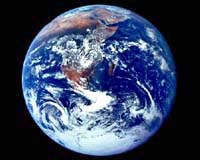
 |
University of the South Pacific social scientist Uentabo Neemia-McKenzie's study, "The Sun Has Come Down Closer to My Island: People's Perceptions of Climate and Other Changes", surveyed people living in Kiribati, a scattered Micronesian archipelago of 100,000 islanders straddling the Equator and the International Dateline.
Neemia-McKenzie said that while there was contradictory scientific evidence on whether Kiribati was warming up and the Pacific was rising, he found a "sense of increased vulnerability" among people.
Kiribati, situated in the Doldrums, has only two seasons, with one normally associated with rain and storms carrying westerly winds.
"They know when it's coming, usually around Christmas and New Year, that's the time they buttress their houses," Neemia-McKenzie said.
"But now that predictability has gone ... and that makes them more vulnerable to the changes. They are worried, they are still grappling and trying to make sense of the change."
He told AFP the study, funded by the World Bank and Japanese government, was a world first in trying to measure the impact of global warming at a country's basic social level.
Neemia-McKenzie, who is i-Kiribati, went to the atolls of Tamana, Abemama, Butaritari and Kiritimati and asked what changes people there had been in the last 30 years.
Some of those changes seemed harmless enough.
Once used to going barefoot, now almost everyone was wearing flip-fops or sandals because the roads and foot paths had become too hot.
Coconut meat took a shorter time to dry before it could be pried from the shell, and coconut oil, once rubbed into the skin and hair, had been abandoned because it now melted off.
But the islanders also spoke of a way of living that had been abruptly thrown off after generations.
The cycles of storm and drought "have taken on new form, so much so that the traditional coping patterns seem to be not working any more."
But increased coastal erosion, thought to be caused by rising ocean waters, was found to be the biggest fear among people on the atolls, which sit no more than five meters (16 feet) above sea level.
Besides destroying causeways and seawalls, rising waters have also begun to topple coconut palms grown along the shoreline that are crucial to survival.
"The worst case is where the erosion has reached the second rows of the coconuts. When they say it is reaching the first or second row of coconuts you know the erosion is affecting them directly," Neemia-McKenzie said.
"The feeling is that the changes are happening and the way they coped in the past is no long available.... It makes them passive bystanders to what is happening."
TERRA.WIRE |